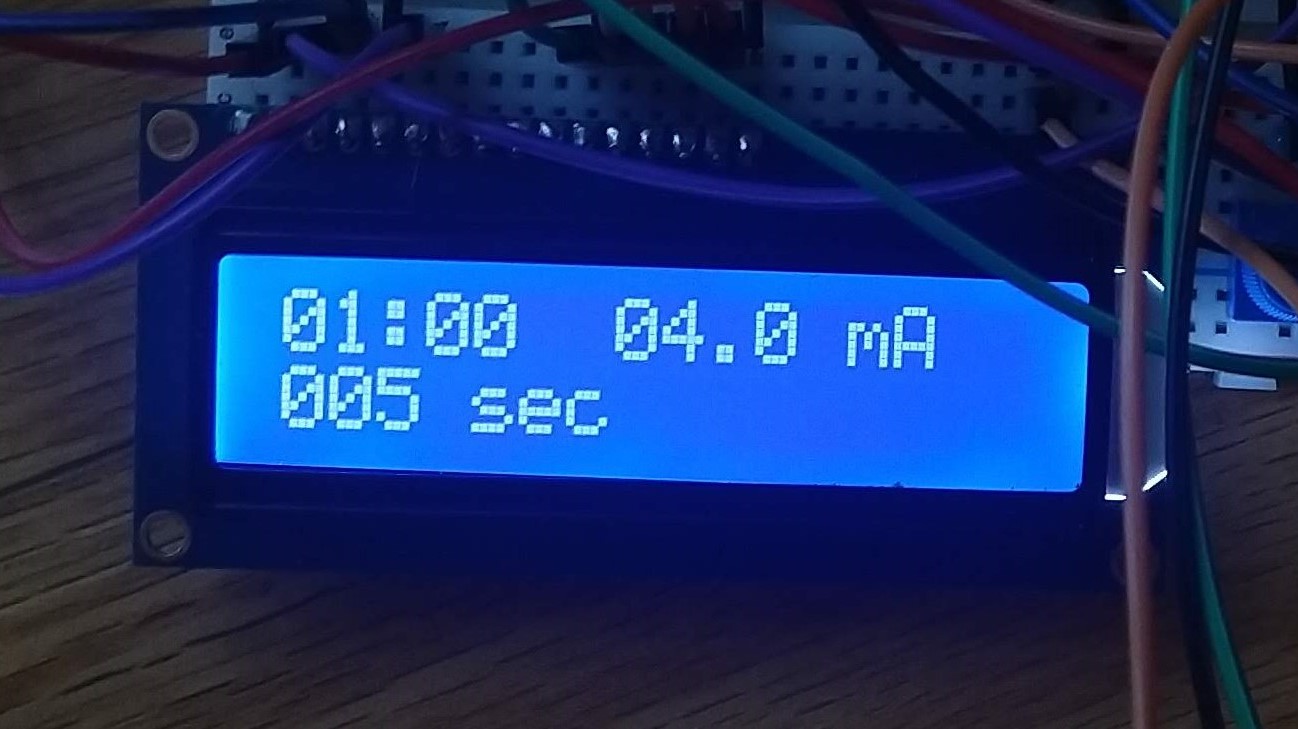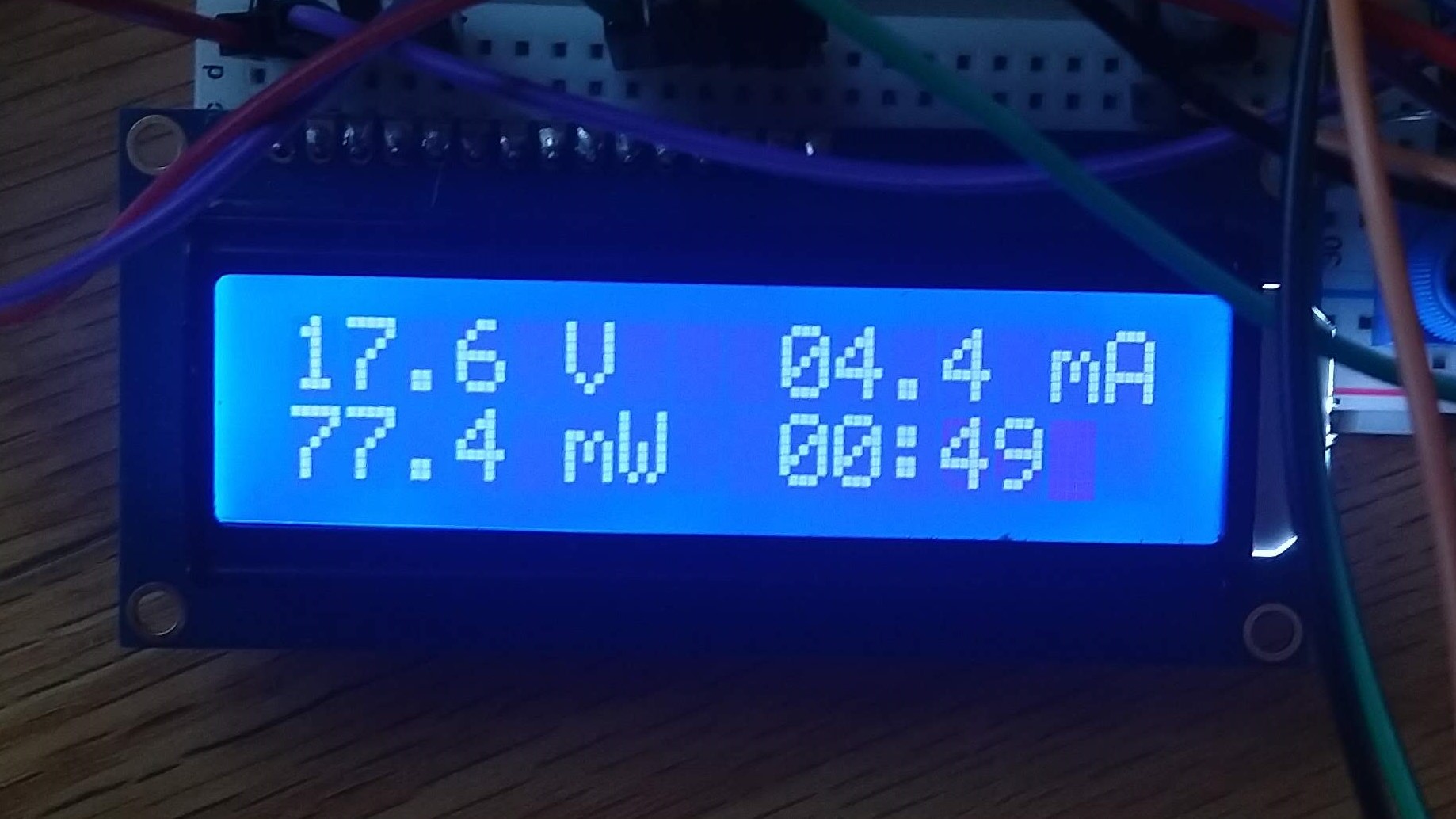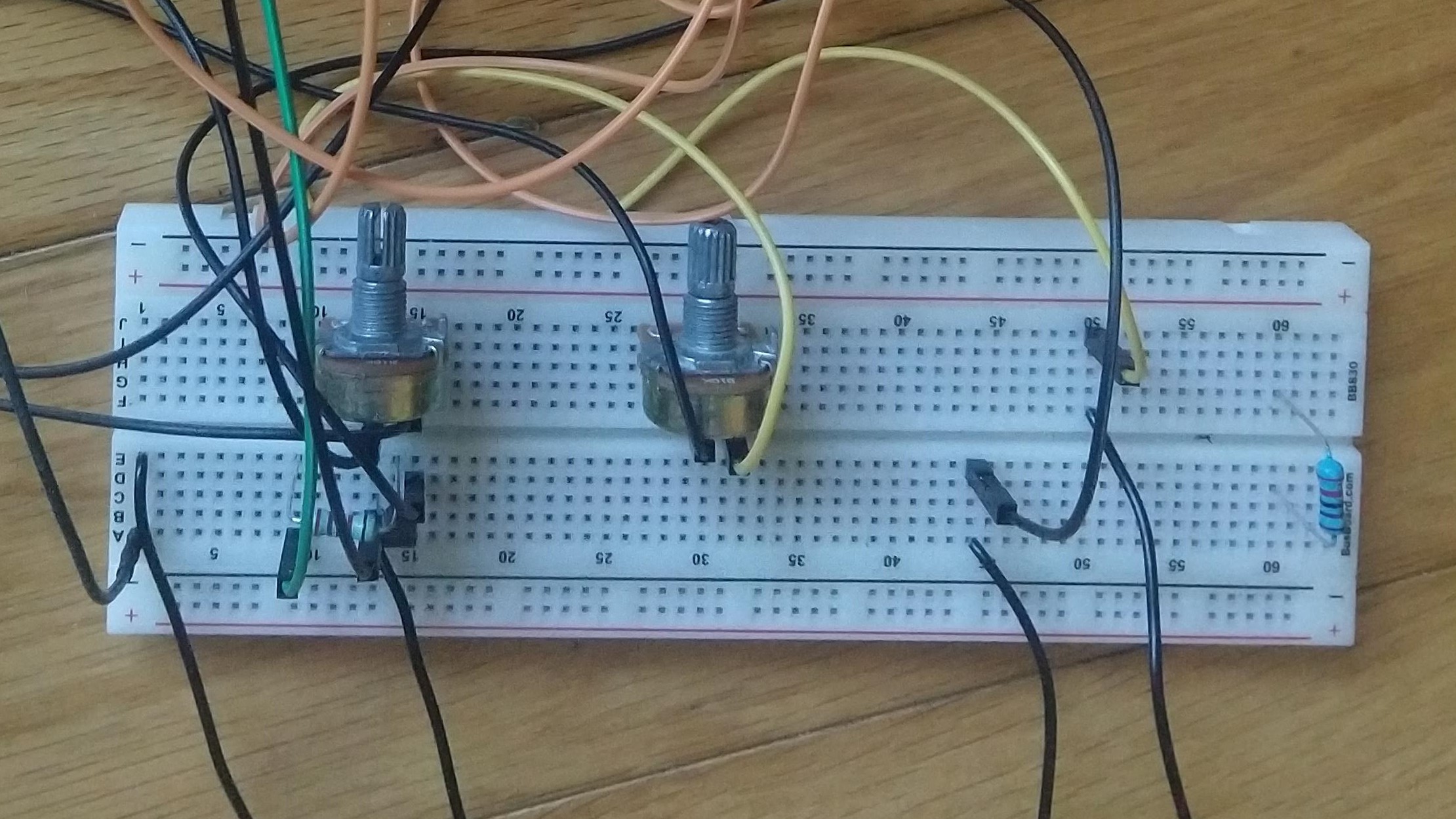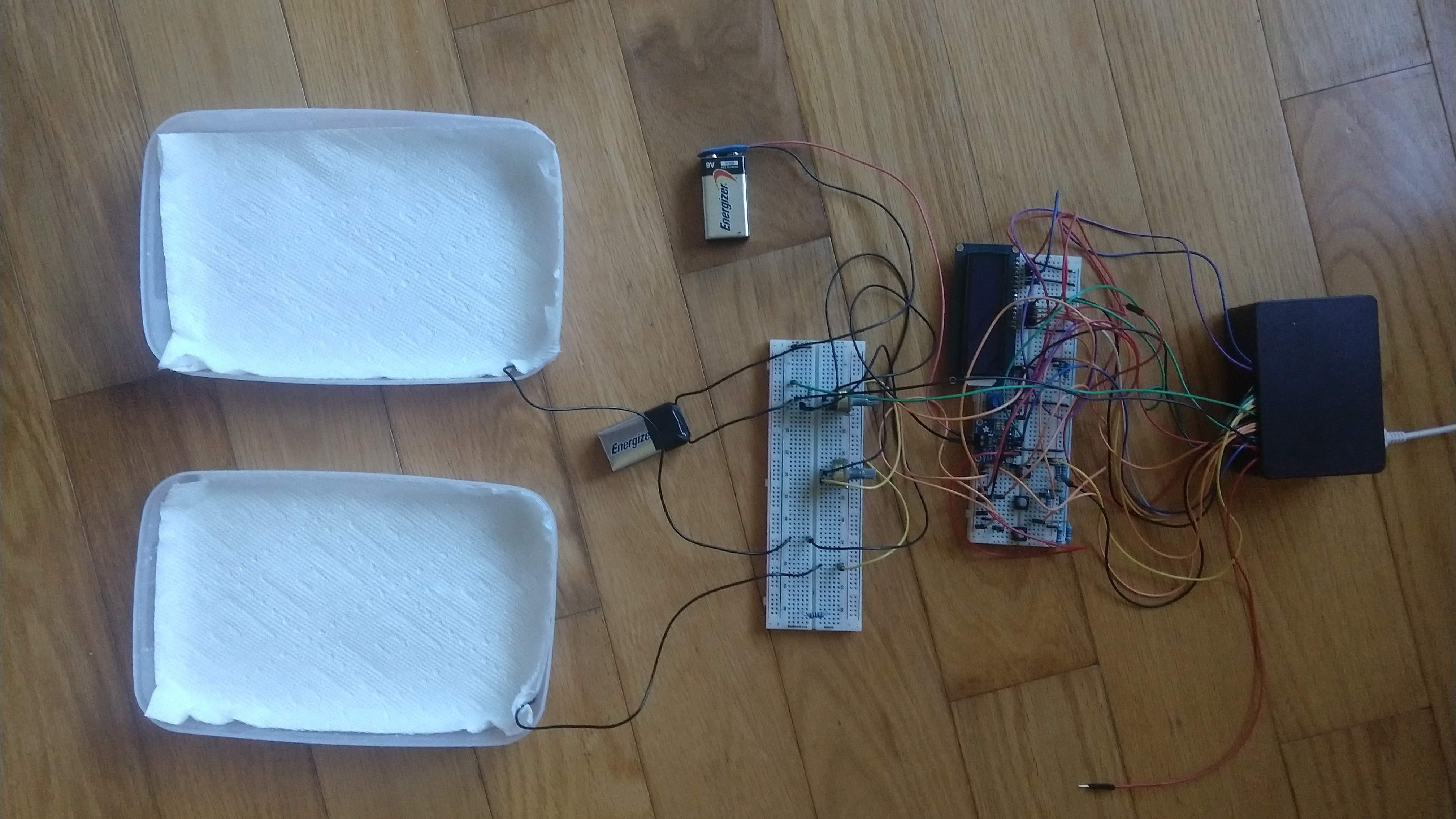Designing an Iontophoresis Device
One of the accepted treatments for hyperhidrosis (excessive sweating) is iontophoresis. Iontophoresis involves running a small current through the hands, feet, or armpits of the patient. Some people set the current whereas others set the voltage for a session. I wanted to see if these control methods were equivalent. Safety concerns around the body and electricity are obviously very important and complicated. RA Fischer, a manufacturer of an FDA approved device, has max settings of 30mA and 58V. To be on the safe side, I chose to use only 9V in my tests.


Start up and sessions screens.
I used a raspberry pi, a bundled voltage/current sensor, and a 9V battery. I added a 16x2 LCD display that shows relevant session information and allows adjustment of starting values by pushbutton. As a learning exercise, I used C to write most of the code. However, to interface with the current/voltage sensor I embedded python code in the C code.
To test the device, I placed my hands in the two plastic containers with aluminum foil electrodes covered by paper towels and just enough tap water to cover my palms. (I also added a ¼ teaspoon each of salt and backing soda as our water has a low mineral content.)


Close up showing the breadboard wiring.

Setup of the iontophoresis device.
Despite having a fairly constant voltage at about 8.5V, the current present in the circuit varied from 2mA-4.5mA through the 10-minute session. Clearly a constant voltage does not equate to a constant current. What remains unclear is whether controlling the voltage, the current, or some other parameter such as total charge (i.e. current×time) works best.




Data collected during the session.
